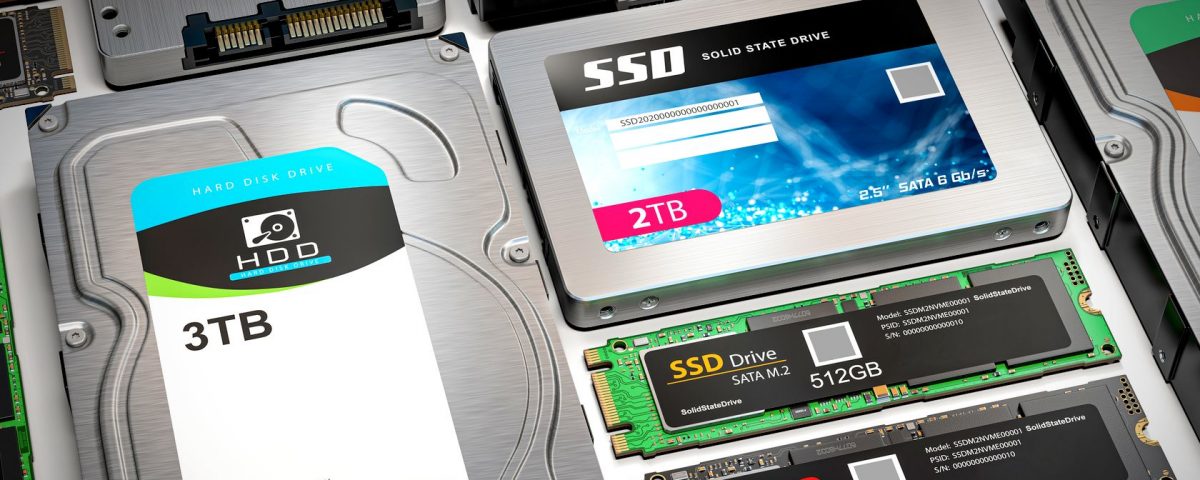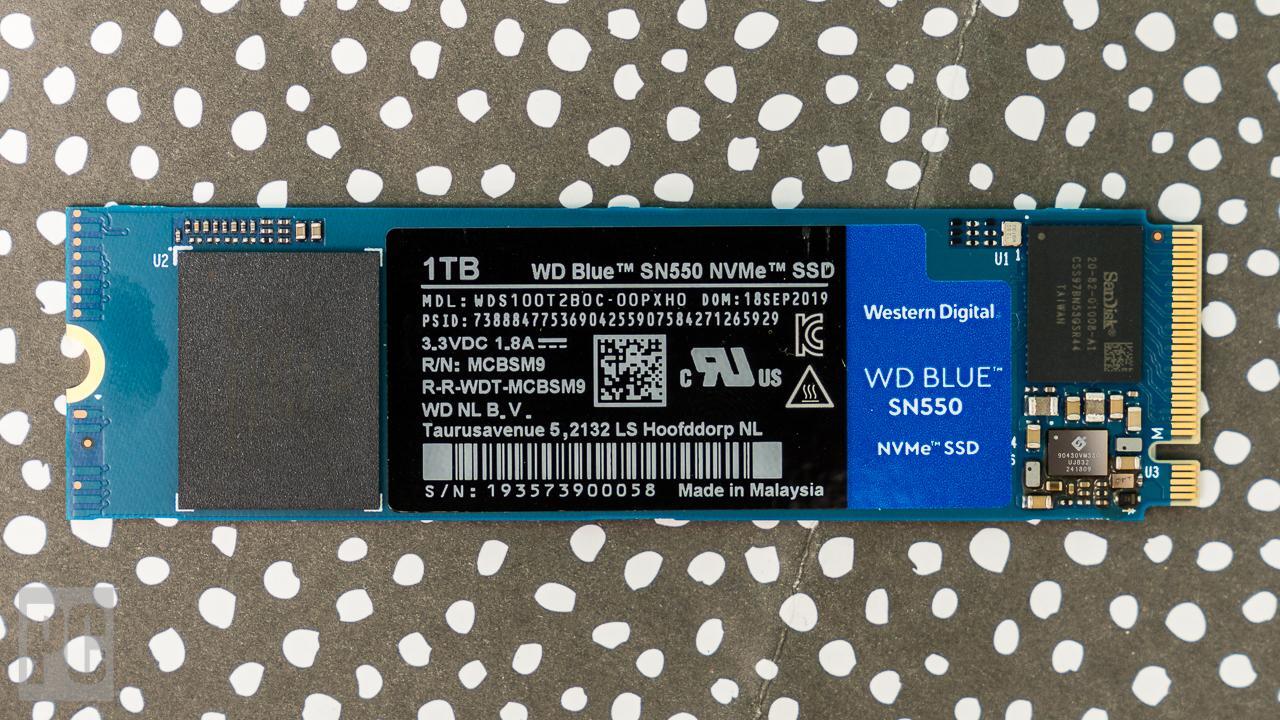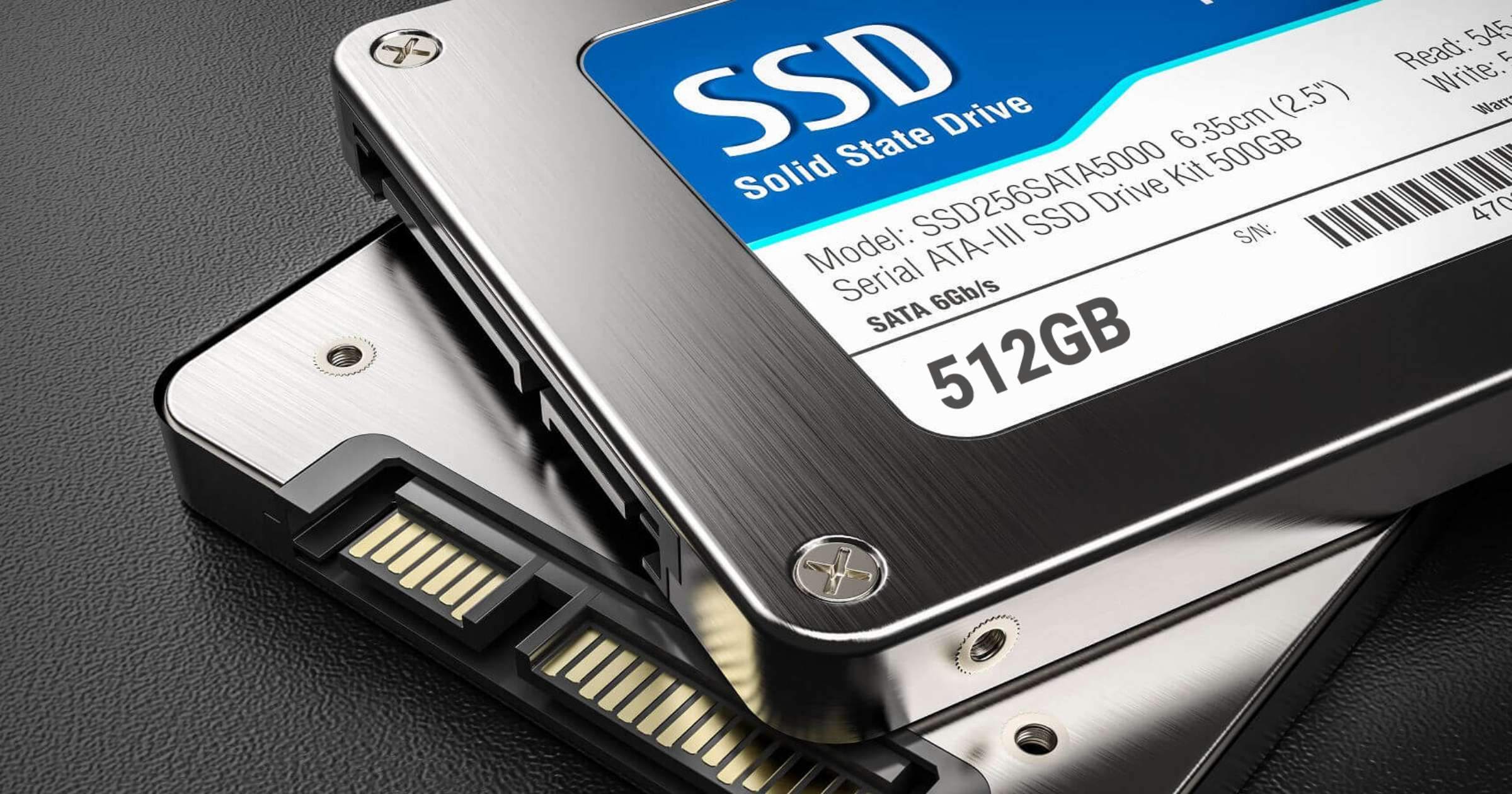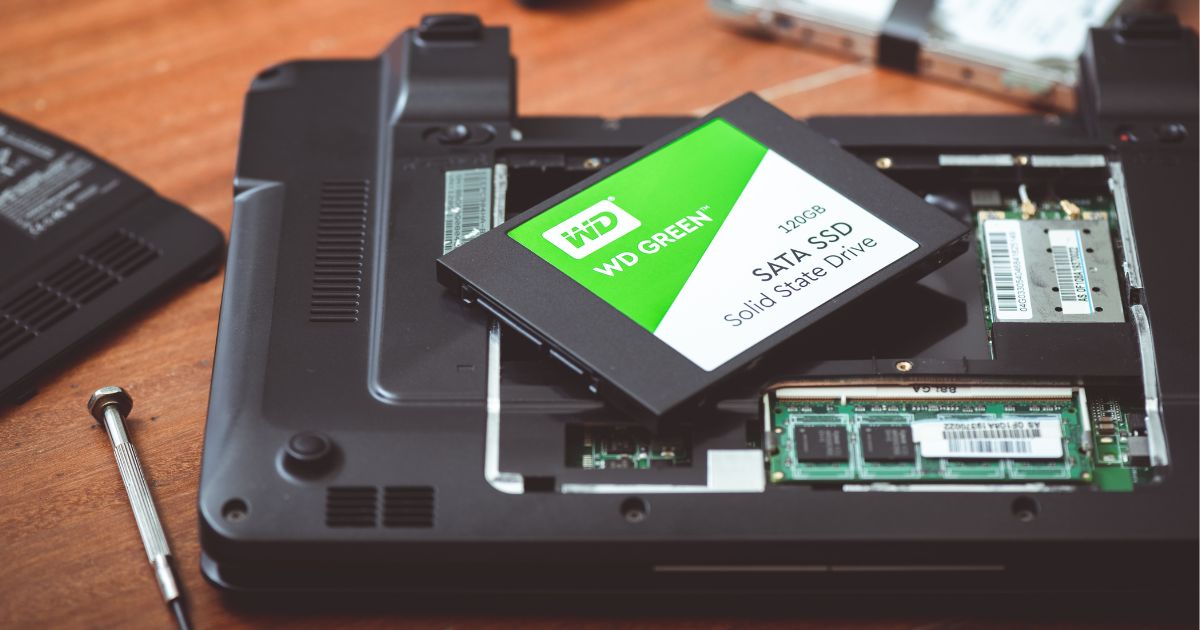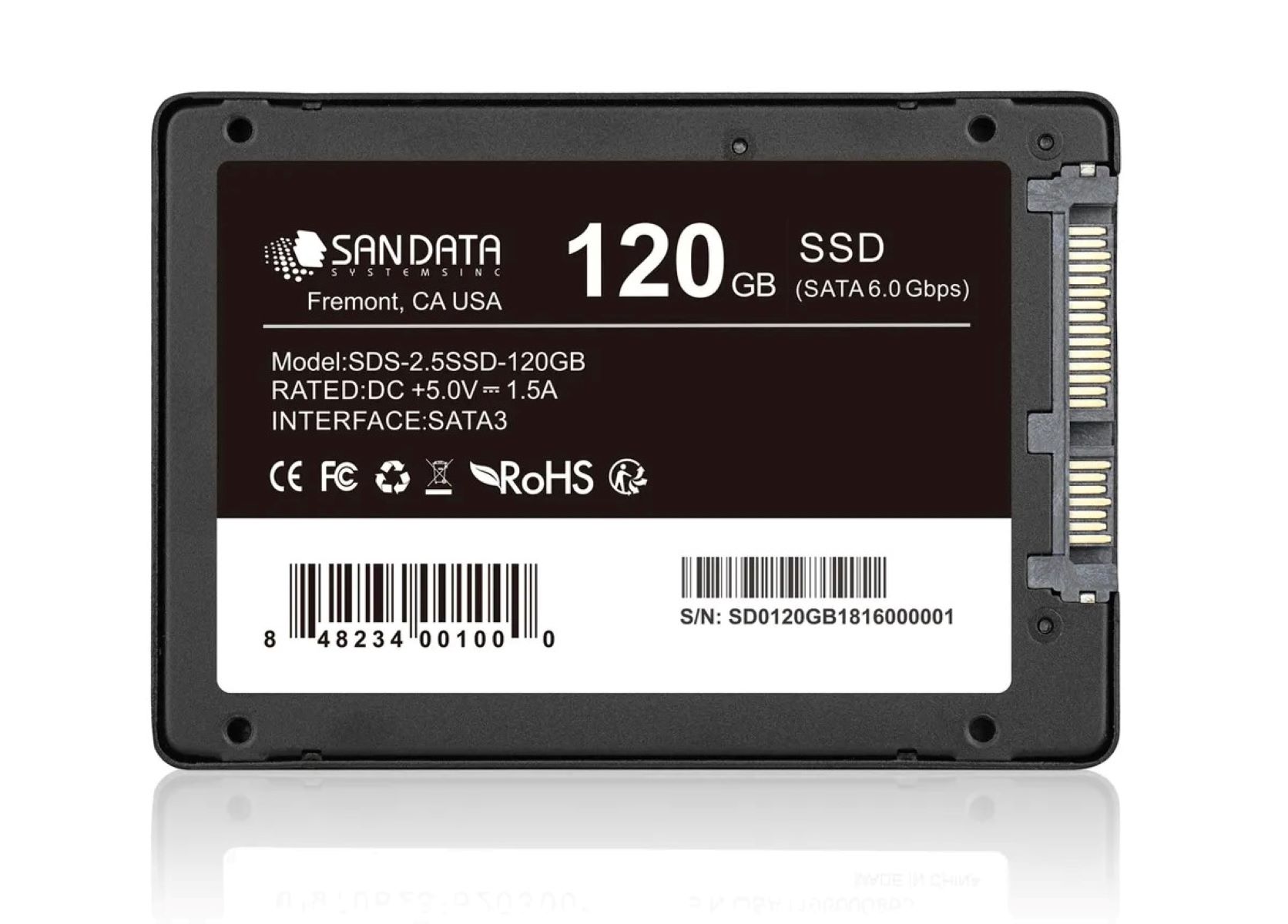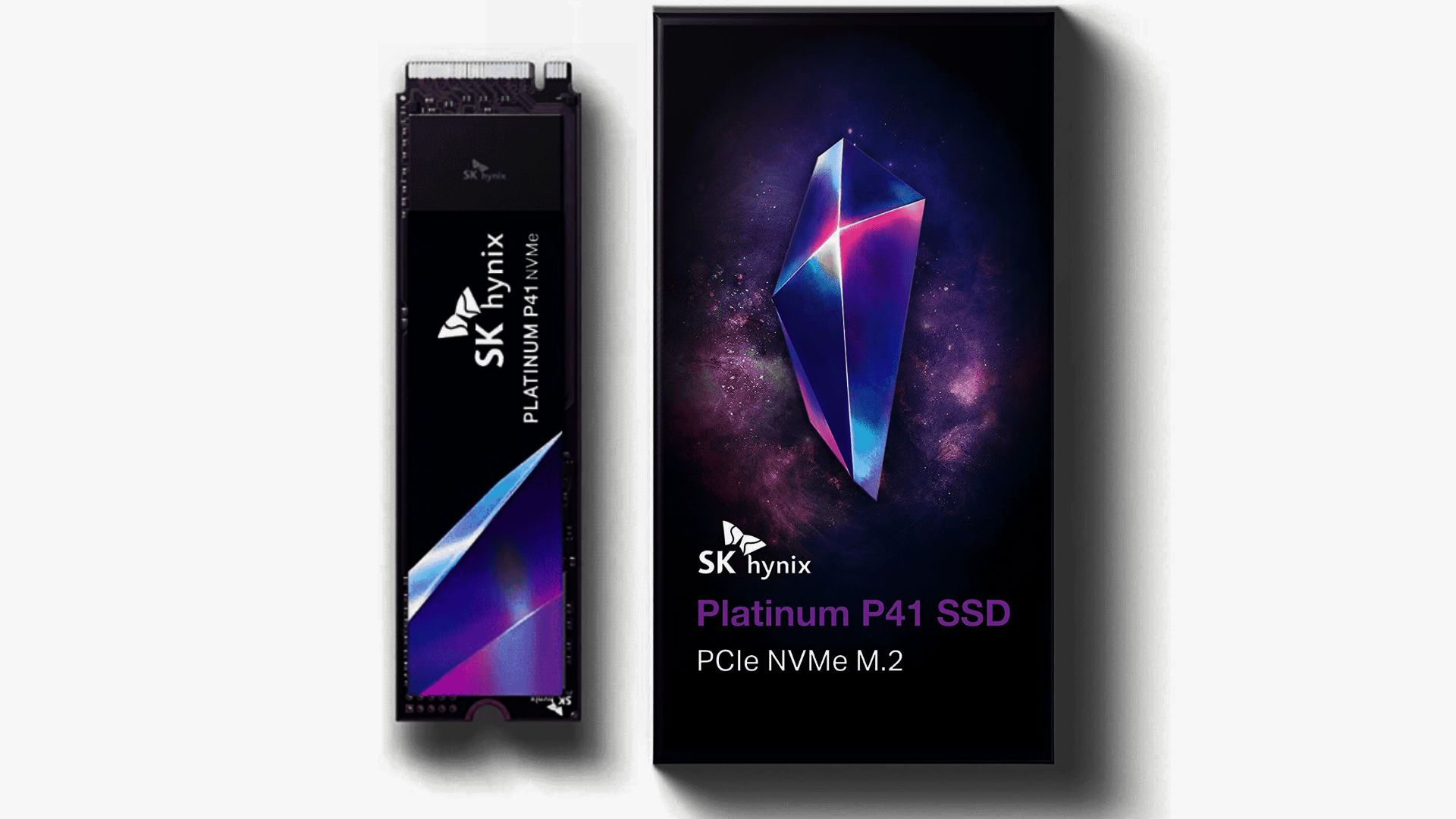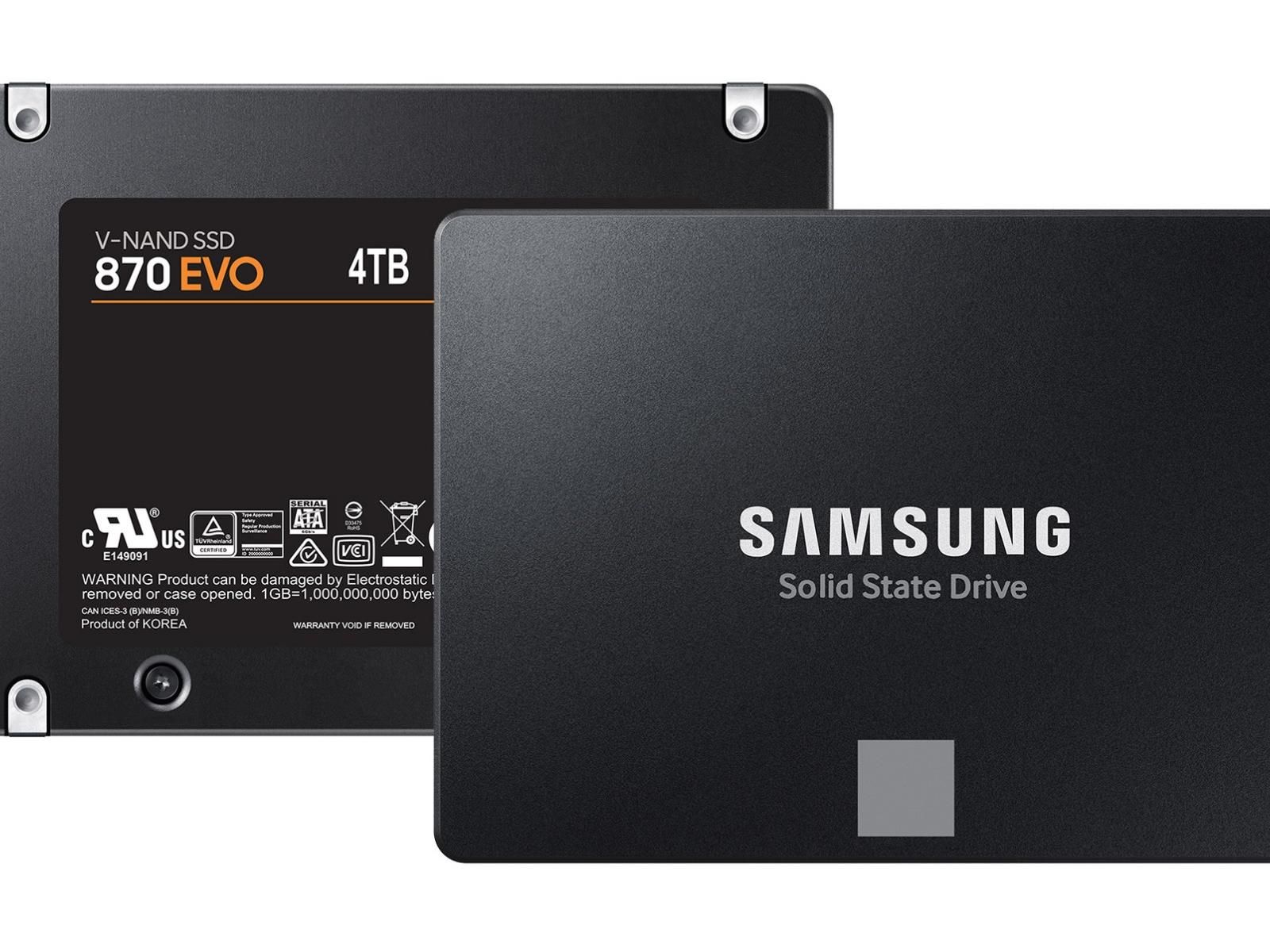Introduction
Welcome to the world of computer storage! If you’re a tech enthusiast or a frequent computer user, you may have come across the term “SSD” before. But do you know what SSD actually means and why it is important in computers?
In today’s digital age, where data plays a crucial role, having a reliable and efficient storage solution is vital. This is where SSD, or Solid State Drive, comes into the picture. SSDs have revolutionized computer storage, offering lightning-fast performance and enhanced durability compared to traditional hard disk drives (HDDs).
In this article, we will delve deeper into the world of SSDs and explore why they are becoming increasingly popular in the computer industry. We will discuss how SSDs work, the advantages they offer over HDDs, the different types of SSDs available in the market, and provide tips for choosing and maintaining an SSD for your computer.
Definition of SSD
A Solid State Drive, commonly known as SSD, is a type of storage device used in computers and electronic devices. Unlike traditional hard disk drives (HDDs), which use mechanical components to store and retrieve data, SSDs store data using flash memory technology. This flash memory is non-volatile, meaning it retains data even when power is not supplied to the device.
SSDs are built with integrated circuits (ICs) that store data electronically on NAND flash memory chips. These chips are organized into blocks, pages, and cells, allowing for the quick retrieval and storage of data. The data is accessed using electronic signals instead of mechanical read/write heads, resulting in faster data transfer speeds and lower latency.
One of the key features of SSDs is their lack of moving parts, making them more reliable and durable than HDDs. Without mechanical components to wear out or break, SSDs are less susceptible to physical damage, shock, and vibrations. This is particularly important in portable devices such as laptops, where durability is crucial for maintaining data integrity during movement.
SSDs also have a smaller form factor compared to HDDs, making them lighter and more space-efficient. They can be easily installed in various devices, including laptops, desktops, gaming consoles, and even smartphones. Additionally, SSDs consume less power, resulting in extended battery life for portable devices and reduced electricity costs for desktop computers.
Overall, SSDs offer a significant improvement in speed, performance, and reliability compared to traditional HDDs. With their flash memory technology, lack of moving parts, and compact design, SSDs have become the go-to choice for many computer users who demand high-speed and reliable storage solutions for their data-intensive tasks.
Why SSD is Important in Computers
In today’s fast-paced digital world, speed and efficiency are paramount when it comes to computing tasks. This is where SSDs play a crucial role. Let’s explore why SSDs are important in computers and why they are increasingly replacing traditional hard disk drives (HDDs).
First and foremost, SSDs offer significantly faster data transfer speeds compared to HDDs. This means that your computer can boot up faster, applications and files can be accessed and loaded more quickly, and overall system responsiveness is greatly improved. Tasks that used to take minutes to complete can now be accomplished in a matter of seconds, enhancing productivity and user experience.
Furthermore, SSDs excel in random read and write operations. This means that even when dealing with multiple small files or fragmented data, SSDs can provide consistently high performance. This is in stark contrast to HDDs, which tend to experience significant slowdowns in such scenarios due to their mechanical nature.
Another important aspect is reliability. SSDs have no moving parts, which eliminates the risk of mechanical failures that are common in HDDs. This makes SSDs more resistant to shocks, drops, and vibrations, ensuring that your data remains safe and intact. Additionally, SSDs are less prone to data loss caused by bad sectors, a problem commonly associated with HDDs.
Not only are SSDs faster and more reliable, but they also consume less power. This is especially valuable for laptop users who rely on battery life. SSDs require less power to operate, resulting in increased battery life and extended usage time for portable devices. In desktop computers, SSDs contribute to a more energy-efficient system, reducing electricity costs and environmental impact.
Lastly, SSDs are quieter than HDDs. The absence of moving mechanical parts means that SSDs produce little to no noise during operation. This is particularly beneficial for users who require a quiet computing environment, such as content creators or those working in noise-sensitive areas.
In summary, SSDs are important in computers because they offer faster data transfer speeds, improved system responsiveness, enhanced reliability, lower power consumption, and quieter operation. With these advantages, SSDs have become the preferred storage solution for users who demand high-performance computing and a reliable data storage medium.
How SSD Works
Solid State Drives (SSDs) operate on a completely different technology compared to traditional hard disk drives (HDDs). Understanding how SSDs work can shed light on their superior performance and reliability. Let’s dive into the inner workings of an SSD.
At the heart of an SSD are NAND flash memory chips. These chips use a type of non-volatile memory, which means they retain data even when the power is turned off. The data is stored in memory cells, which are organized into blocks and pages. Each memory cell represents a binary value of either 0 or 1.
To write data to an SSD, electrical charges are applied to the memory cells, altering their states and storing the binary information. When the data needs to be read, the state of the memory cells is measured, and the corresponding binary values are retrieved. This process, known as programming and reading, allows for fast and efficient data storage and retrieval.
To ensure data integrity and reliability, SSDs employ various techniques. One such technique is wear leveling, which evenly distributes the data across the memory cells. This prevents excessive wear on specific cells, prolonging the lifespan of the SSD. Additionally, error-correcting code (ECC) algorithms are used to detect and correct any errors that may occur during the data storage and retrieval process.
SSDs also utilize a controller that acts as the brain of the drive. The controller manages data flow, performs error correction, and handles wear leveling. It also interfaces with the computer’s storage bus, allowing for seamless communication between the SSD and the rest of the system. The controller plays a significant role in determining the performance and functionality of the SSD.
Unlike HDDs, which rely on spinning platters and read/write heads to access data, SSDs have no moving parts. This absence of mechanical components contributes to the superior speed and reliability of SSDs. Without moving parts, SSDs can access any part of the data almost instantaneously, resulting in faster data transfer speeds, reduced latency, and improved system responsiveness.
In summary, SSDs store data using NAND flash memory chips, which store binary information in memory cells. These cells are organized into blocks and pages and are programmed and read using electrical charges. Techniques such as wear leveling and error correction ensure data integrity, while the controller manages data flow and handles communication with the computer. The lack of moving parts sets SSDs apart from HDDs, providing faster access to data, enhanced reliability, and improved overall performance.
Advantages of Using SSD in Computers
Solid State Drives (SSDs) have gained immense popularity in the computer industry due to the numerous advantages they offer over traditional hard disk drives (HDDs). Let’s explore the key advantages of using SSDs in computers.
One of the most significant advantages of SSDs is their lightning-fast performance. Compared to HDDs, SSDs offer significantly faster data transfer speeds, resulting in quicker boot times, faster application loading, and snappier overall system performance. Tasks that used to take minutes on an HDD can now be completed in a matter of seconds on an SSD, enhancing productivity and user experience.
The lack of moving parts in SSDs contributes to their exceptional reliability. HDDs rely on spinning platters and read/write heads, which are prone to mechanical failures and physical damage. In contrast, SSDs do not have any moving parts, making them more resistant to shocks, drops, and vibrations. This durability ensures that your data remains safe and intact, even in challenging environments or during accidental mishaps.
SSDs also excel in random read and write operations. Unlike HDDs, which experience performance degradation when dealing with multiple small files or fragmented data, SSDs maintain consistent high-speed performance. This makes them ideal for tasks such as gaming, video editing, and data-intensive applications, where quick access to files is crucial for a smooth experience.
Another advantage of SSDs is their compact form factor. In comparison to the bulky and space-consuming HDDs, SSDs have a smaller physical footprint. This makes them ideal for slim laptops and sleek desktop setups, where space optimization is paramount. SSDs can be easily installed in various devices, including ultrabooks, all-in-one PCs, and even compact form factor gaming systems.
Power efficiency is yet another advantage of SSDs. Traditional HDDs require spinning platters and read/write heads, which consume a significant amount of power. In contrast, SSDs consume less power, resulting in extended battery life for laptops and reduced electricity costs for desktop computers. Additionally, because SSDs produce less heat, they contribute to a cooler operating environment for your computer components.
When it comes to noise levels, SSDs are virtually silent during operation. The absence of moving parts eliminates the mechanical sounds commonly associated with HDDs. This is particularly beneficial for users who require a quiet computing environment, such as content creators, audio engineers, or those working in noise-sensitive areas.
In summary, the advantages of using SSDs in computers are faster performance, increased reliability, better handling of random read and write operations, compact form factor, power efficiency, and silent operation. With their exceptional speed, durability, and efficiency, SSDs have become the go-to choice for users seeking superior performance and reliability in their computing experience.
Types of SSDs
Solid State Drives (SSDs) come in various types and form factors, offering flexibility and compatibility with different computer systems. Let’s explore the different types of SSDs available in the market.
1. SATA SSDs: The Serial ATA (SATA) SSDs are the most common type of SSDs available. They are designed to connect to the SATA interface on motherboards, just like traditional hard disk drives (HDDs). SATA SSDs are available in both 2.5-inch and M.2 form factors and provide a significant boost in performance compared to HDDs. They are an excellent choice for users looking to upgrade their existing systems without needing to change the motherboard or other components.
2. NVMe SSDs: Non-Volatile Memory Express (NVMe) SSDs are the latest and fastest type of SSDs available. They use the NVMe protocol, which is designed to take full advantage of the high-speed PCIe (Peripheral Component Interconnect Express) interface. NVMe SSDs offer significantly faster data transfer speeds compared to SATA SSDs, making them ideal for demanding tasks such as gaming, content creation, and data-intensive applications. These SSDs are typically available in M.2 form factor, which allows for easy installation in compatible motherboards.
3. PCIe SSDs: PCIe SSDs utilize the PCIe interface to achieve even higher data transfer speeds than SATA or NVMe SSDs. These SSDs are available in different form factors, including add-in cards and M.2 drives. PCIe SSDs are often used in high-performance systems, such as gaming PCs and workstations, where speed is of utmost importance. They can provide blazing-fast read and write speeds, significantly reducing data transfer times and improving overall system responsiveness.
4. M.2 SSDs: M.2 SSDs are small, compact SSDs that connect directly to the motherboard via the M.2 slot. They are available in both SATA and NVMe variants and are commonly used in laptops, ultrabooks, and small form factor desktops. M.2 SSDs offer the advantage of a smaller physical footprint, allowing for more space-efficient system designs. They also support higher speeds compared to traditional 2.5-inch SATA SSDs, making them a popular choice for users seeking a balance of performance and form factor convenience.
5. External SSDs: External SSDs are portable SSDs that connect to computers via USB or Thunderbolt interfaces. These SSDs are useful for users who need to transfer large files or have additional storage on-the-go. External SSDs come in various form factors, including portable drives and rugged drives, catering to different requirements. They offer the advantage of fast data transfer speeds and compact designs, providing users with flexibility and convenience in accessing and storing their data.
In summary, there are various types of SSDs available, including SATA, NVMe, PCIe, M.2, and external SSDs. Each type offers unique advantages in terms of compatibility, speed, and form factor. Choosing the right type of SSD depends on your specific requirements, such as the system interface, performance needs, and physical space availability. Regardless of the type chosen, upgrading to an SSD can significantly enhance the speed, reliability, and overall performance of your computer system.
How to Choose the Right SSD for Your Computer
When it comes to choosing the right Solid State Drive (SSD) for your computer, there are several factors to consider. The right SSD can significantly enhance the performance and storage capacity of your system. Here are some key considerations to help you make an informed decision.
1. Capacity: Determine your storage needs and choose an SSD with an appropriate capacity. Consider factors such as the size of your operating system, applications, and files you regularly use. SSDs are available in a wide range of capacities, from 120GB for basic usage to 4TB or more for high-capacity storage needs.
2. Form Factor: Assess the physical space available in your computer system and choose the appropriate form factor. Common form factors include 2.5-inch SATA, M.2, and PCIe. Ensure that the SSD you choose is compatible with your motherboard and available slots. If you’re upgrading a laptop, consult the manufacturer’s specifications for compatibility.
3. Interface: Consider the interface your computer supports. SATA SSDs are widely compatible with most computers, while NVMe PCIe SSDs offer significantly faster speeds, but require a compatible PCIe slot. Ensure that your motherboard or expansion card supports the desired interface before purchasing an SSD.
4. Speed: If speed is a top priority, consider NVMe PCIe SSDs, as they offer faster data transfer rates compared to SATA SSDs. However, if your system does not support NVMe, a high-quality SATA SSD can still provide significant performance improvements over a traditional HDD.
5. Endurance: Check the endurance rating of the SSD, which indicates its lifespan or how many terabytes can be written to it before failure. Higher-endurance SSDs are suitable for intensive use, such as gaming or video editing, while lower-endurance models work well for everyday computing tasks. Consider your usage patterns and select an SSD with an appropriate endurance rating.
6. Brand and Reliability: Opt for reputable brands known for their reliability and quality. Look for SSDs from manufacturers with a track record of producing dependable storage solutions. Check online reviews and customer feedback to ensure that the SSD you choose is reliable and performs consistently.
7. Price: Set a budget that aligns with your storage needs and desired performance level. SSD prices have become more affordable in recent years, but higher-capacity or higher-performance SSDs may still carry a premium. Consider the price per capacity and performance ratio to get the best value for your money.
By considering these factors, you can choose the right SSD that meets your storage requirements, fits your system, offers the desired level of performance, and provides reliable and lasting performance for your computer.
Tips for Maintaining SSD Performance
Once you have upgraded your computer with a Solid State Drive (SSD), it’s important to take proper care of it to maintain its performance and prolong its lifespan. Here are some essential tips to help you maximize the performance and longevity of your SSD.
1. Enable TRIM: Ensure that TRIM is enabled on your operating system. TRIM is a command that allows the SSD to optimize the storage space by marking unused data blocks as available for future use. Enabling TRIM helps to maintain the performance of the SSD over time by preventing unnecessary write operations and reducing wear on the drive.
2. Keep the SSD Firmware Updated: Manufacturers often release firmware updates to improve performance, add features, and address any potential issues. It’s important to periodically check for firmware updates and install them to ensure that your SSD operates at its best.
3. Avoid Overfilling the Drive: Leave some free space on your SSD to allow for efficient wear leveling and avoid performance degradation. Aim to keep at least 10-20% of the SSD’s capacity free to ensure optimal performance.
4. Minimize Unnecessary Write Operations: SSDs have a limited number of write cycles, so minimizing unnecessary writes can help extend their lifespan. Some ways to reduce write operations include avoiding excessive file copies, minimizing temporary file usage, and relocating system temporary folders to a different drive.
5. Disable Indexing and Defragmentation: SSDs do not benefit from traditional hard drive optimizations like indexing and defragmentation. These processes can cause unnecessary wear and tear on the SSD. It is recommended to disable indexing and exclude the SSD from scheduled defragmentation to avoid unnecessary write operations.
6. Optimize Power Settings: SSDs have low power consumption compared to traditional hard drives, but optimizing power settings can help further extend their lifespan. Adjust your power settings to avoid excessive sleep and hibernation cycles, as frequent power state changes can impact the longevity of the SSD.
7. Regularly Backup Your Data: As with any storage device, it’s essential to regularly back up your data. While SSDs are generally reliable, unexpected failures and data loss can still occur. Ensure you have a backup solution in place to protect your valuable files and information.
8. Periodically Check SMART Data: SMART (Self-Monitoring, Analysis, and Reporting Technology) is a built-in feature of SSDs that provides information about the drive’s health and potential issues. Use a utility program to periodically check the SMART data of your SSD and address any warnings or errors promptly.
By following these tips, you can maintain the performance and longevity of your SSD. With proper care, your SSD will continue to provide fast and reliable storage for your computer system for years to come.
Conclusion
In conclusion, Solid State Drives (SSDs) have revolutionized the computer storage landscape with their superior speed, reliability, and performance compared to traditional hard disk drives (HDDs). SSDs offer lightning-fast data transfer speeds, improved system responsiveness, and enhanced durability, making them an indispensable component in modern computers.
With their various advantages, such as faster boot times, quicker application access, and better handling of data-intensive tasks, SSDs have become the go-to choice for users who demand high-performance computing. Their compact form factors, power efficiency, and silent operation further contribute to their appeal in both desktop and laptop systems.
When choosing an SSD, consider factors such as capacity, form factor, interface, speed, endurance, brand, and price to ensure the best fit for your specific needs. Once you’ve installed your SSD, maintaining its performance is crucial. Enabling TRIM, keeping firmware updated, avoiding overfilling the drive, minimizing unnecessary write operations, and optimizing power settings are all key practices to ensure optimal performance and longevity.
Remember to regularly back up your data and periodically check the SMART data of your SSD to identify any potential issues early on. By following these guidelines, you can maximize the benefits of your SSD and enjoy its fast, reliable, and efficient storage for years to come.
Overall, SSDs have transformed the computing experience, offering significant improvements in speed, reliability, and efficiency. Embracing SSD technology is a wise investment, whether you’re upgrading an existing system or building a new one. With their exceptional performance and durability, SSDs continue to shape the future of computer storage and empower users to accomplish more in less time.







